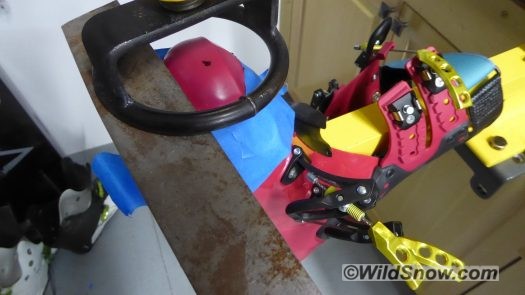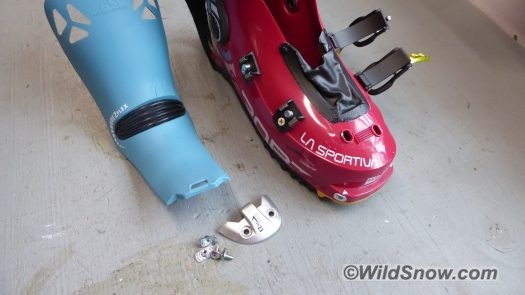Translate. Sportiva love. Specifically. Their ski touring boots (though the climbing boots are not too shabby either). Lisa is testing a pair of Sportiva Sparkles (review yesterday). My role is to do a length and width punch at toe so she can use the correct size shell for her heel and mid-foot. If every boot out there had an easily removable tongue like this, my work in this earthly shell would be complete and I’d smile as I shifted to the next plane of existence. As it is, I’m still tasked with grinding rivets out of other brands and models. But all La Sportiva requires is a screw driver. A few photos to explain.

La Sportive tongue attachment is easily removed, also includes a feature for aligning the tongue with your leg shape. I’ve never felt a need for that, but can see it being useful for boot fitting someone with a pronounced tibial curve (how _is_ your tibial curve, by the way?).

Easily fits in the boot press for a toe box punch, as well as absent tongue not being vulnerable to heat damage. All I’d add to make my intimate relationship with these shoes complete would be removable cuff rivets, but that would mean I’d already shed my own shell and gone to boot fitter heaven. Oh, and yes Virginia, a cuff cant rivet would be nice. Instead, we align cuff angle by adding spacer material to the side of the liner cuff.
WildSnow.com publisher emeritus and founder Lou (Louis Dawson) has a 50+ years career in climbing, backcountry skiing and ski mountaineering. He was the first person in history to ski down all 54 Colorado 14,000-foot peaks, has authored numerous books about about backcountry skiing, and has skied from the summit of Denali in Alaska, North America’s highest mountain.

